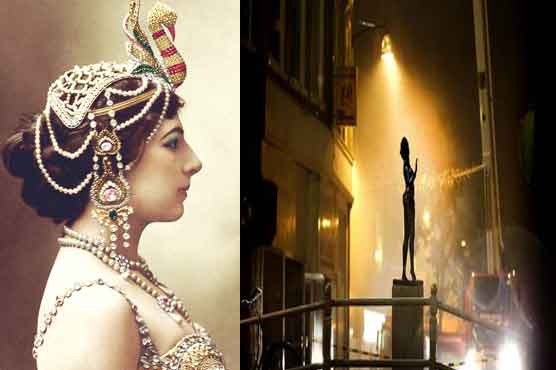Mata Hari�s building gutted

A fire has gutted a building in Netherlands where Mata Hari, the exotic dancer was born.
AMSTERDAM — Dutch television broadcast images of the building, now occupied by the Hari hair salon, showing it engulfed in flames on Saturday in the northern city of Leeuwarden, 70 miles (110 kilometers) north of Amsterdam.
In 1876, Mata Hari was born there as Margaretha Zelle, the daughter of a Dutch businessman.
She later fled an unhappy marriage and won acclaim as an exotic dancer in Paris in the early 1900s.
She was executed by firing squad by the French in 1917 on suspicion of spying for Germany, though her guilt was long a question of historical dispute.
Greta Garbo portrayed Mata Hari in a famous film in 1931.
Born on August 7, 1876, in Leeuwarden, Netherlands, Mata Hari was a professional dancer and mistress who accepted an assignment to spy for France in 1916.
Hired by army captain Georges Ladoux, agreeing to pass military information gleaned from her conquests to the French government.
Not long after, however, Mata Hari was accused of being a German spy. She was executed by firing squad on October 15, 1917, after French authorities learned of her alleged double agency.
Mata Hari was born Margaretha Geertruida Zelle in Leeuwarden, Netherlands, on August 7, 1876, to father Adam Zelle, a hat merchant who went bankrupt due to bad investments, and mother Antje Zelle, who fell ill and died when Mata Hari was 15 years old.
Following her mother s death, Mata Hari and her three brothers were split up and sent to live with various relatives.
At an early age, Mata Hari decided that sexuality was her ticket in life. In the mid-1890s, she boldly answered a newspaper ad seeking a bride for Rudolf MacLeod, a bald, mustachioed military captain based in the Dutch East Indies. She sent a striking photo of herself, raven-haired and olive-skinned, to entice him.
Despite a 21-year age difference, they wed on July 11, 1895, when Mata Hari was just shy of 19. During their rocky, nine-year marriage—marred by MacLeod s heavy drinking and frequent rages over the attention his wife garnered from other officers—Mata Hari gave birth to two children, a daughter and a son.
(The couple s son died in 1899 after a household worker in the Indies poisoned him for reasons that remain a mystery.)
By the early 1900s, Mata Hari s marriage had deteriorated. Her husband fled with their daughter, and Mata Hari moved to Paris. There, she became the mistress of a French diplomat who helped her hatch the idea of supporting herself as a dancer.
All things "Oriental" were the fad in the Paris of 1905.
The time seemed ripe for Mata Hari s exotic looks and the "temple dance" she created by drawing on cultural and religious symbolism and that she had picked up in the Indies.
With characteristic confidence, she siezed the moment.
She billed herself as a Hindu artist, draped in veils—which she artfully dropped from her body.
In one memorable garden performance, Mata Hari appeared nearly naked on a white horse.
Although she daringly bared her buttocks—then considered the most titillating part of the anatomy—she was modest about her breasts, generally keeping them covered with brassiere-styled beads.
Completing her dramatic transformation from military wife to siren of the East, she coined her stage name, "Mata Hari," which means "eye of the day" in Indonesian dialect.
Mata Hari took the Paris saloons by storm, then moved on to the bright lights of other cities. Along the way, she helped turn the striptease into an art form and captivated critics.
A reporter in Vienna described Mata Hari as "slender and tall with the flexible grace of a wild animal, and with blue-black hair." Her face, he wrote, "makes a strange foreign impression."
Another enthralled newspaper writer called her "so feline, extremely feminine, majestically tragic, the thousand curves and movements of her body trembling in a thousand rhythms."



